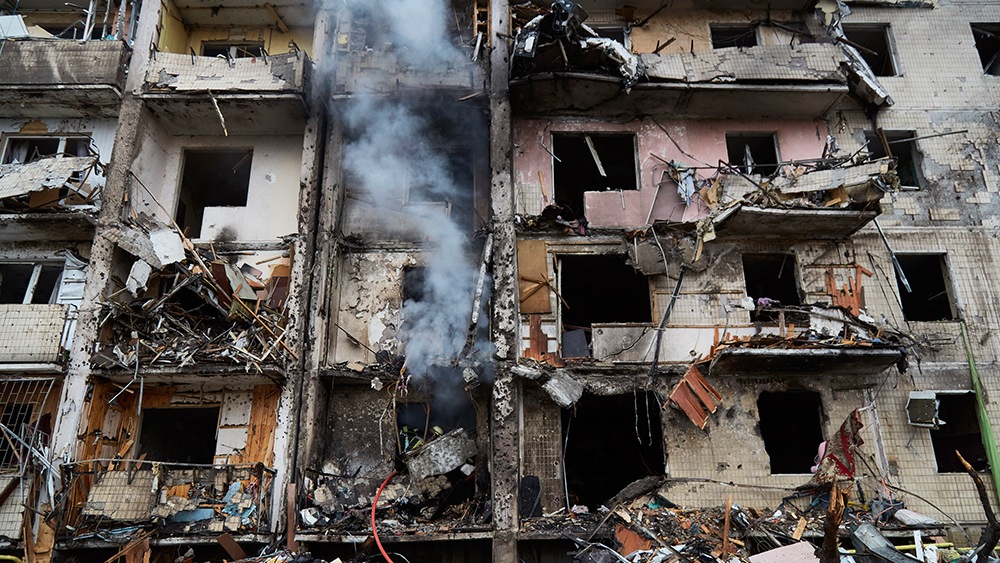Riots and unrest spreading beyond Sri Lanka and Panama due to inflation and economic breakdown
10/27/2022 / By Ethan Huff

The world economy is in dire straits as country after country descends into crisis followed by chaos. It all seems to have begun, as it usually does, in the Third World, but is now rapidly spreading to the First World.
Sri Lanka and Panama were among the earliest nations to see crisis-related unrest spill over into the streets. But now Peru, Ecuador, Haiti, Pakistan, Argentina, Tunisia, Kenya, Albania, Uganda and Nigeria are also seeing protests and riots in response to widespread food and fuel shortages, inflation, and other major signs of very serious collapse soon on the way.
In the First World, France, The Netherlands, Germany, Italy, Spain, Poland and Norway are all seeing similar societal rattles that point towards a global cataclysm in the making.
In France, the primary issue at hand has to do with rail workers demanding higher wages due to inflation.
Both rail and air transport workers in France ended up joining each other in calling for a nationwide strike unless their demands were addressed.
In The Netherlands, farmers threatened by the country’s anti-nitrogen “green” initiatives unleashed tractor brigades to show Dutch politicians what The People really think about their climate change schemes.
We are told that upwards of 30 percent of Dutch livestock farms could be forced to close if the globalist government’s plans to eliminate nitrogen from the country are a success.
If things get bad enough, will Americans rise up in protest?
A similar farmer uprising also occurred in nearby Germany, which we now know is in the throes of a total energy collapse due to Western sanctions against Russia.
Back in July, some 500 farmers participated in protests in Bavaria, expressing solidarity with their Dutch colleagues. They also spoke out against the German government’s environmental regulations, which threaten to destroy the country’s fuel stability.
Poor working conditions, job cuts and inflating fuel and fertilizer costs also sparked protests in Italy around the same time.
Amid the worst drought conditions in 70 years that resulted in widespread fires, Italian farmers chained themselves together in protest in a square outside Premier Mario Draghi’s office.
In Spain around the same time, there was a metallurgist strike involving 20,000 trade union workers who demanded higher pay and improved working conditions.
There was also another strike involving Irish Ryanair flight attendants that disrupted hundreds of flights between Spain and Ireland.
In Warsaw, Poland, agricultural producers belonging to an organization called Agrounia protested against interest rate increases on loans, as well as unabated imports from Ukraine that they said continue to displace domestic products.
Over in Norway around the very same time, oil and gas industry workers held a strike that resulted in entire oil fields halting production.
The result of this strike was even higher gas prices across Europe, which is already struggling through massive energy hyperinflation on the back of Russia’s invasion of Ukraine.
Iran, Chile, Venezuela, Libya, Yemen, Ghana and even China can all now be added to the protest and unrest list as well. Each of these countries has seen similar events occur as those aforementioned.
In communist China, protests turned violent in the central Henan province after a financial scandal was exposed that threatens the entire country’s banking system.
More than 1,000 protesters showed up, according to reports, in front of the Zhengzhou sub-branch of the People’s Bank of China to demand access to their now-frozen funds. These people continue to demand answers as to what happened to their money.
Interested in learning more about the engineered takedown of the global economy? You can do so at Collapse.news.
Sources for this article include:
Submit a correction >>
Tagged Under:
chaos, civil unrest, Collapse, crops, economic riot, economy, energy, energy crisis, energy report, food supply, fuel, fuel supply, harvest, Inflation, Panama, protest, riots, Sri Lanka, supply chain, unrest, uprising, world agriculture
This article may contain statements that reflect the opinion of the author
RECENT NEWS & ARTICLES
COPYRIGHT © 2017 PENSIONS NEWS



















